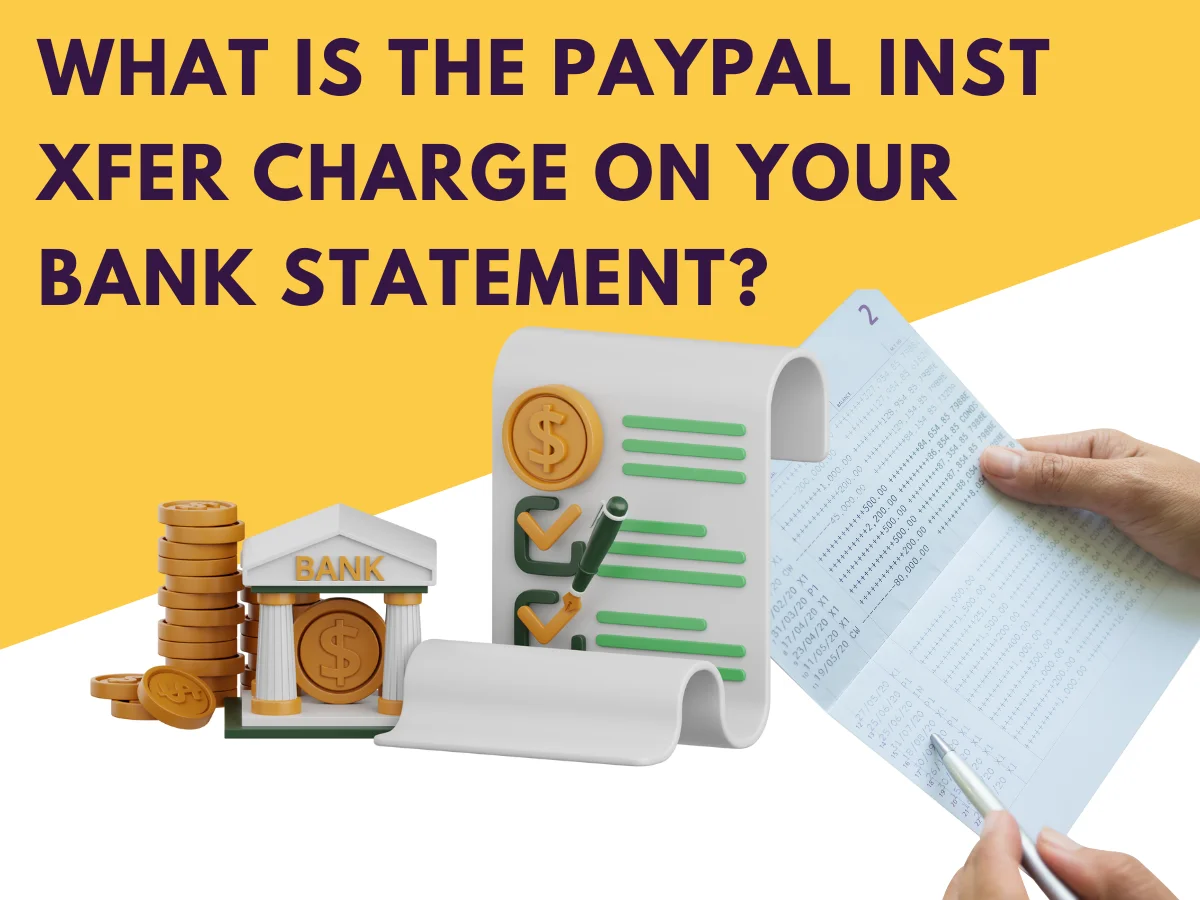In the dynamic landscape of digital transactions, PayPal stands as a beacon of innovation. Among its trailblazing features is the PayPal Instant Transfer, introduced in 2019 to redefine the speed at which funds traverse between PayPal wallets and bank accounts or debit cards. This guide aims to unravel the intricacies of the enigmatic entry on your bank statement, the PayPal Inst Xfer charge offering a comprehensive understanding of its nature and implications.
Also read Amazon Digital Charge on Bank Statement.
What is the Instant Xfer Charge on PayPal?
At its core, the PayPal Instant Transfer charge signifies a monumental leap in the evolution of financial transactions. In a departure from the conventional timelines, this feature allows users in the United States to complete fund transfers within a mere 30-minute window. To comprehend the implications of this charge, it’s essential to explore the mechanics of this rapid and efficient money movement.

What is PayPal Instant Transfer on My Bank Statement?
The appearance of “PAYPALSI77” or a similar code on your bank statement is a distinctive marker of engagement with PayPal’s Instant Transfer service. While the funds may not instantaneously reflect as deducted from your account balance, their immediate availability for use distinguishes this transaction from traditional transfer processes. Unraveling the layers of this entry sheds light on the seamless functionality of PayPal Instant Transfer.
What Does PAYPALSI77 Mean?
The seemingly cryptic code “PAYPALSI77” serves as the digital fingerprint of a PayPal Instant Transfer. Decoding this alphanumeric identifier is pivotal for a nuanced understanding of your bank statement. By unraveling the code, users gain insights into the specific transaction and enhance their ability to track and manage their financial activities with precision.
What Is the PayPal Inst Xfer Bank Charge?
To navigate the financial maze of PayPal Inst Xfer charges, a detailed examination of the transaction entries on your bank statement is necessary. Often denoted as “ACH hold PayPal inst xfer,” this charge, amounting to $3 per ACH hold for PayPal Instant Transfer withdrawals, warrants exploration. Understanding the intricacies of this charge is crucial for financial transparency.
ACH Hold PayPal Inst Xfer:
The ACH hold component introduces an additional layer of consideration. While the designated funds may not be instantaneously subtracted from your account balance, their immediate availability for use is restricted due to the ACH hold. This deliberate delay serves as a security measure, ensuring a balance between the swiftness of transactions and the integrity of the financial process.
How Do PayPal Inst Xfer Charges Look Like?
Here’s a summarized version of the appearance of PayPal Inst Xfer charges in tabular form, along with an example of how it might look on a bank statement:
| Entry | Description |
| ACH Hold PayPal Inst Xfer | Indicates the ACH (Automated Clearing House) hold related to PayPal Instant Transfer. |
| $3 per Ach Hold PayPal Inst XFER On | Denotes a charge of $3 for each ACH hold associated with PayPal Instant Transfer. |
| Withdrawal PAYPAL Inst Xfer | Represents the withdrawal transaction specifically linked to PayPal Instant Transfer. |
Example on Bank Statement:
On your bank statement, you might come across entries related to PayPal Instant Transfer charges. Here’s how they could look:
- ACH Hold PayPal Inst Xfer:
- Description: ACH Hold PayPal Inst Xfer
- Charge: -$3.00
- Balance After Transaction: $XXX.XX
- Withdrawal – PAYPAL Inst Xfer:
- Description: Withdrawal PAYPAL Inst Xfer
- Amount Withdrawn: -$50.00
- Balance After Transaction: $XXX.XX
What Is PayPal Instant Transfer & How Does It Work?
For those unfamiliar with the concept, a detailed exploration of PayPal Instant Transfer and its underlying mechanisms is enlightening. Understanding the intricacies of how this feature works equips users with the knowledge to navigate the platform seamlessly. This knowledge becomes instrumental in making informed decisions regarding financial transactions, fostering a confident and empowered user experience.
How to Stop PayPal Inst Xfer Bank Charges
While the “Inst Xfer” service is convenient, managing the associated charges is crucial. Here are some actionable tips:
- Maintain sufficient funds in your linked bank account: This prevents the charge by ensuring your bank account has enough balance to cover the transaction.
- Utilize standard transfers: For non-urgent transfers, choose the free but slower standard transfer option.
- Increase your sending limits: Request PayPal to raise your daily sending limit to avoid multiple transfers and minimize charges.
- Explore alternative payment methods: Consider using fee-free payment methods offered by merchants for non-urgent transactions.
- Plan your transactions: Planning online purchases and transfers in advance helps avoid the need for instant transfers and their associated charges.

Distinguishing Authorized and Unauthorized Transactions
It’s crucial to differentiate between authorized and unauthorized “Inst Xfer” charges.
- Authorized charges: These occur when you knowingly initiate an “Inst Xfer” and understand the associated fee.
- Unauthorized charges: If you notice “Inst Xfer” charges on your statement for transactions you didn’t authorize, report them to PayPal immediately as potential fraudulent activity.
Be cautious when encountering unfamiliar charges and report them promptly if suspicious.
Conclusion
In conclusion, the PayPal Inst Xfer charge on your bank statement is not a mystifying puzzle but a testament to the platform’s commitment to expediting financial transactions. Armed with the comprehensive insights gained from this guide, users can navigate the intricacies of PayPal Instant Transfer charges confidently, maximizing the benefits of this innovative feature.
